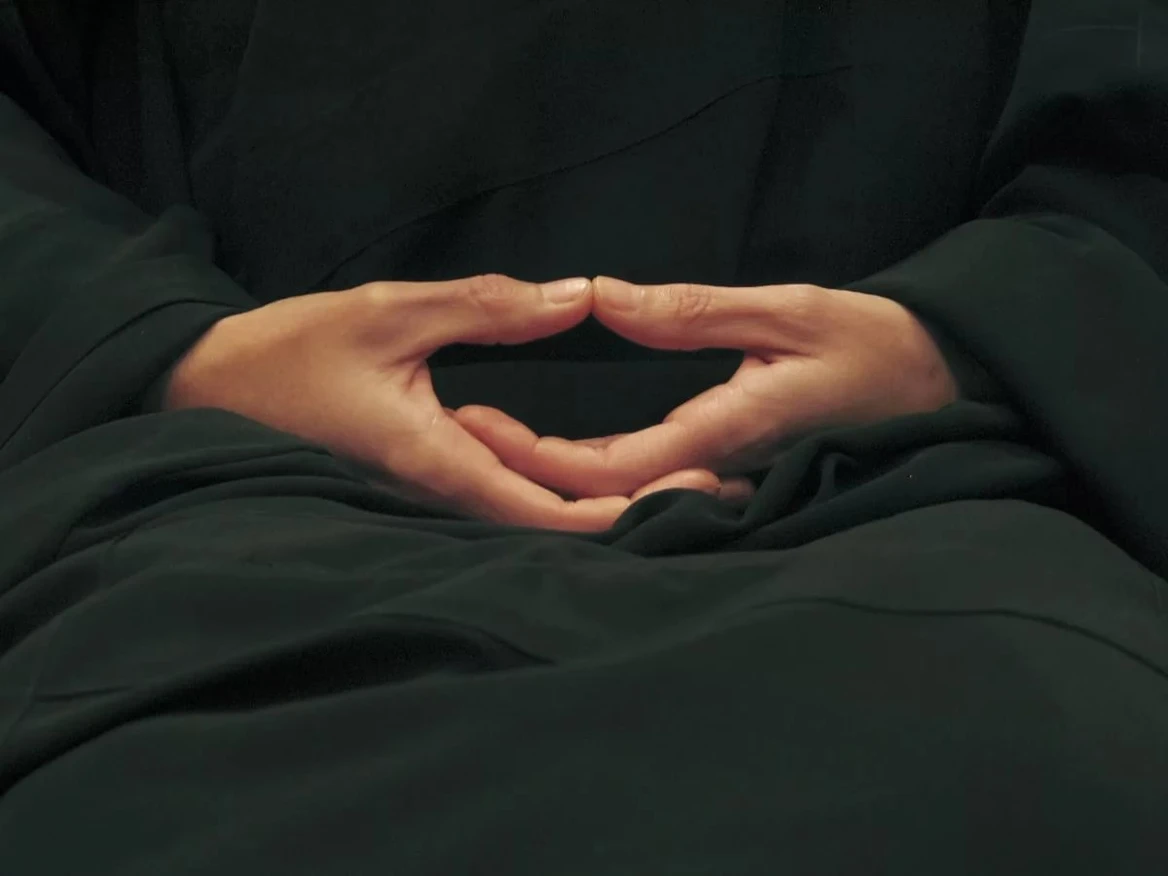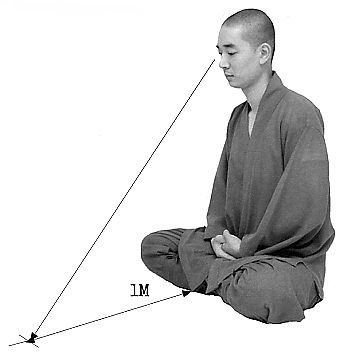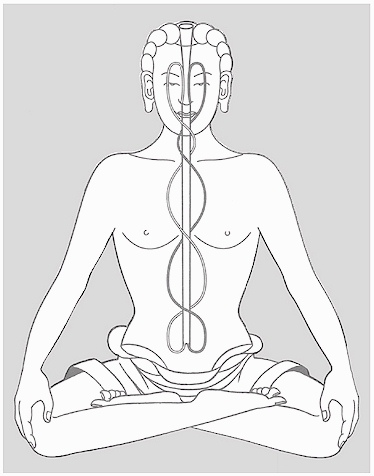The Seven-point Posture of Vairochana, used by experienced meditators for centuries, is recommended as the best way to attain a calm, clear state of mind. Recognized as the optimal and correct Buddhist meditation posture, it helps unravel the timeless wisdom embedded in the meditation practice, guiding you toward inner serenity and mindfulness.
Correct Buddhist Posture: Legs
If possible, sit with your legs crossed in the full-lotus position, where each foot is placed sole upward on the thigh of the opposite leg. While this position may be challenging initially, daily practice will gradually lead to increased adaptability, allowing you to sit in this manner for longer periods.
Although this leg position provides optimal body support, it’s not mandatory. An alternative is the half-lotus, where the left foot is on the floor under the right leg, and the right foot rests on top of the left thigh.
Alternatively, you can sit in a simple cross-legged posture with both feet on the floor. Placing a firm cushion under your buttocks helps maintain a straight back and allows for longer, more comfortable sessions without experiencing pins-and-needles in your legs and feet.
If sitting on the floor is challenging, consider meditating in a chair or on a low, slanted bench. The key is to prioritize your comfort during the practice.
Best Arms Position During Meditation

Hold your hands loosely on your lap, about two inches below the navel, right hand on top of the left, palms upward, with the fingers aligned. The two hands should be slightly cupped so that the tips of the thumbs meet to form a triangle. Shoulders and arms should be relaxed. Your arms should not be pressed against your body but held a few inches away to allow circulation of air: this helps to prevent sleepiness.
Back
Your back is of utmost importance. It should be straight, relaxed, and gently upright, as if the vertebrae were a stack of coins. While it might be challenging initially, with time, maintaining this posture will become second nature, and you’ll reap the benefits: your energy will flow more freely, you won’t feel sluggish, and you’ll find increased comfort during meditation, allowing for longer and more fulfilling sessions.
Eyes

New meditators often find it easier to concentrate with their eyes fully closed. This is quite acceptable. However, it is recommended that you leave your eyes slightly open to admit a little light, and direct your gaze downwards. Closing your eyes may be an invitation to sluggishness, sleep or dream-like images, all of which hinder meditation.
Jaw
Your jaw should be relaxed and teeth slightly apart, not clenched. Your mouth should also be relaxed, with the lips together lightly.
Tongue
The tip of your tongue should touch the palate just behind the upper teeth. This reduces the flow of saliva and thus the need to swallow, both of which are hindrances as your concentration increases and you sit in meditation for longer periods.
Head
Your neck should be bent forward a little so that your gaze is directed naturally towards the floor in front of you. If your head is held too high you may have problems with mental wandering and agitation, and if dropped too low you could experience mental heaviness or sleepiness.
This seven-point posture is most conducive to clear, unobstructed contemplation. You might find it difficult in the beginning, but it is a good idea to go through each point at the start of your session and try to maintain the correct posture for a few minutes. With familiarity it will feel more natural and you will begin to notice its benefits.
However, if you are unable to adapt to sitting cross-legged you can make a compromise between perfect posture and a relaxed state. In other words, keep your body and mind happy, comfortable and free of tension.
- Follow us on Instagram, and Facebook.
- Subscribe to our YouTube channel.
- Looking for more great content? Dig into our blog.
- Email us at hi@meditationmarathon.me



